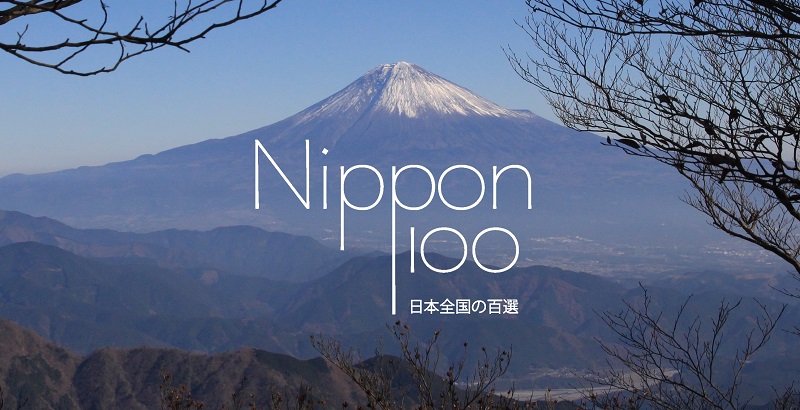From Hiroshima, there is only one Shinkansen stop to Iwakuni and its surprises. At the dead end of Honshu in Yamaguchi prefecture, the city is known for a 634 ft long bridge running across the Nishiki river: the Kintai-kyo. Officially one of the three main of Japan. And there are also the snakes…
Kintai bridge of Iwakuni stands as one of the 100 landscapes of Japan. Describing the entries of that 2009 election, which selected the most representative places of Heisei era, is the main goal of Nippon100.
Back to the Nishiki river, in the beginning of Edo era (17th century). When the first lord of Iwakuni decided to build a castle to settle, he logically decided to do so on the edge of the nearest hill, with a large view over the city. That hill was fine, but was standing on the other side of Nishikigawa. Meaning that the lord had to build a bridge to visit his fellow subjects. And here problems began.
Kikkawa Hiroe, the first lord, his son and later his grand-son, took several years to realise that the flat bridge they kept building on the river was not strong enough for the seasonal currents of the Nishiki…


343 years of bridges
The third lord of Iwakuni, Kikkawa Hiroyoshi, thus decided to break new ground in the field of bridges. With a local engineer, he had the idea of a bridge relying of four pillars and displaying five beautiful arches over the river waters. The plan was great, but the first attempt was still not strong enough. Built in only three months, the first 1673 Kintai-kyo collapsed a few months later, in may 1674.
Three days after that, the building of a new bridge was already in progress. That second attempt, achieved in the fall of 1674 and ready to use in November, has been the good one. That time, the pillars were built larger.
Since then, the Kintai-kyo has been a toll bridge. From its earlier year, the lord of Iwakuni decided that the users – mainly merchants and samurais – must pay a fee to cross the bridge in order to cover the maintenance costs of the arches. The dwellings of the seconds are still to be seen in Iwakuni.






Because of its unique shape, the Kintai-kyo bridge quickly became a symbol of Japan. But the Second World war, weakening the bridge with less maintenance, lead to an other collapsing the 14th of September 1950, after the typhoon Kijia reached the region. The identical rebuilding of the national treasure – elected as one since 1922 – began the following year.
Six types of wood for Iwakuni bridge
Everything has been fine for the bridge since these years (except when a truck tried to cross it in 1998, leading to a 2,2 billions yens reparation). From 2002 to 2004, a first maintenance since the rebuild was processed.
634 ft long (193,3), the Kintai-kyo is 16 ft wide (5m). The arches are about 115 ft long (35m) each and are pretty slippery when it is raining. One of the bridge special features is that six different types of wood are used for the framework. Japanese zelkova and pine are joined to support the arches. While cypress, chestnut and oak are used for the supports. Finally the walkway and handrails are made of Japanese cypress.



White snake of Iwakuni
Kintai bridge is not the only treasure to be found in Iwakuni, not mentioning the castle. In the middle of Kikko park, on the castle side of the bridge, there is a tiny vivarium. The small building is the home of the white snakes of Iwakuni, rare reptiles that have maintained their stabilized mutation for several centuries.


Out of the vivarium, the white snakes might only be seen in Iwakuni city on the Nishiki riverbank (yet one will need a large amount of luck!). The first specimen known was captured in 1738 in Yokoyama area. The white snakes, just like the bridge of Iwakuni, have been a national treasure of Japan since 1922.  How to get there:Iwakuni is an easy train trip from Hiroshima. The main station is on the Sanyo Main line (16 stops, 40 minutes) while the Shinkansen station (“Shin-Iwakuni”) is one stop away on the Sanyo Shinkansen line. From the stations, buses are convenient to reach the Kintai bridge area: about 20 minutes and 300 yens from the first, or 15 minutes and 350 yens from the second. Crossing the bridge is not free (and has not been from its early years). These days, it costs 300 yens. One might also choose the combined ticket (bridge/ropeway/castle for 940 yens). And the white snakes are in the Kikko park, a short walk from the Kintai-kyo. Discover more:The official Iwakuni town website offers a wide variety of views to discover the bridge, from ancient materials to snowy pictures. It is in Japanese but still easy to explore. The Kintai-kyo festival is organised each year on April the 29th. Iwakuni’s being one of the three most famous bridges of Japan, two others exist to discover. There are the Nihonbashi, made out of granite in Tokyo, and the Megane (“glasses”) bridge in Nagasaki, crossing the Nakashima and also the oldest arch bridge in Japan.
|






